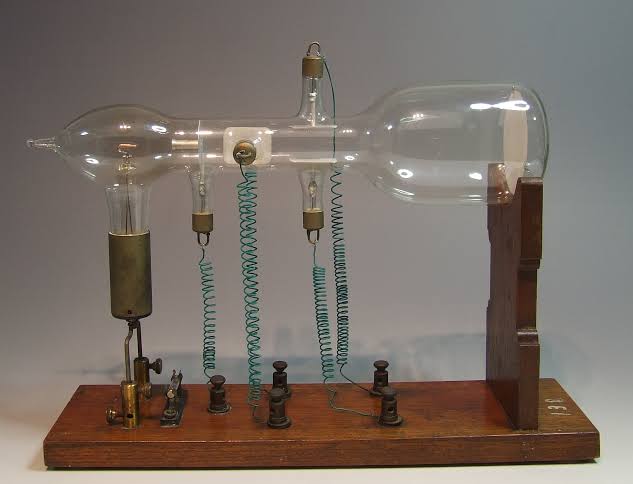The Technology That Shaped Screens

Imagine a world without screens. No TVs, no computers, no smartphones. A world where the only way to get information was through books, newspapers, and letters. Hard to believe, right? But back in the late 1800s, screens didn’t exist—until a German physicist named Karl Ferdinand Braun invented something that would change everything.
That invention was the Cathode Ray Tube (CRT), also known as the Braun Tube. This simple yet groundbreaking technology became the foundation for televisions, computer monitors, and even early video games. Let’s take a journey back in time to see how it all began.
A Bright Idea in 1897
In the late 19th century, scientists were fascinated by electricity and how it could be used to create light and images. One of those scientists was Karl Ferdinand Braun, a brilliant physicist from Germany.
In 1897, Braun created a device that could display glowing patterns on a screen using a beam of electrons. This was the first version of the CRT, and it looked like a long glass tube with wires connected to it. Inside, there was a vacuum (an airless space), and when electricity passed through, it created a bright green glow.
At the time, Braun didn’t invent it for entertainment or communication. His goal was simple: he wanted to make electrical signals visible so scientists could study them. This early CRT was used in oscilloscopes—devices that helped measure electrical waves.
But what started as a scientific tool would soon become much more.
How CRTs Became Screens
For several decades, CRTs remained a niche technology, used mainly in laboratories. Then, in the early 20th century, inventors began experimenting with using CRTs to display moving images.
By the 1920s and 30s, scientists found a way to control the electron beam inside the CRT, making it possible to form pictures on a screen. This led to the birth of the first electronic televisions. Unlike mechanical TVs that used spinning disks to show images, CRT-based televisions could display smooth, high-quality motion pictures.
Fast forward to the 1950s, and CRT televisions had become a household necessity. Families gathered around their glowing screens, watching black-and-white shows, and later, color broadcasts.
At the same time, CRT technology was being adapted for computers. The first computer monitors in the 1960s used CRT screens to display text and numbers. By the 1980s and 90s, personal computers had CRT monitors, bringing colorful graphics and video games to millions of people worldwide.
How CRTs Work: The Magic Behind the Screen
At first glance, a CRT might look like just a glass tube, but inside, something fascinating happens.
- Electron Gun – At the back of the tube, a small device called an electron gun shoots out a beam of electrons.
- Magnetic Fields – Electromagnets guide the electron beam to move across the screen in a specific pattern.
- Phosphor-Coated Screen – The front of the tube is coated with a special material (phosphor) that glows when hit by electrons, creating bright dots of light.
- Images Formed – By moving the electron beam super fast and changing its intensity, the CRT creates images on the screen.
In color TVs and monitors, there are three electron guns—one for red, green, and blue. By mixing these colors, CRTs could create stunningly rich images long before LCD screens were popular.
The Rise and Fall of CRTs
For almost a century, CRT technology dominated the world of screens. Whether it was televisions, arcade machines, or computer monitors, CRTs were everywhere.
But as technology advanced, people wanted thinner, lighter, and more energy-efficient screens. The bulky CRTs, with their deep, heavy glass tubes, couldn’t compete with the new LCD (Liquid Crystal Display) and LED screens that emerged in the 2000s.
By 2010, CRTs had almost disappeared. Manufacturers stopped producing them, and people replaced their old CRT TVs with flat-screen models.
However, CRTs haven’t completely vanished. Enthusiasts still use them for retro gaming, as old-school video games look better on CRT screens. Some scientists and artists also use CRTs for experimental displays and research.
The Legacy of the Cathode Ray Tube
Today, when you watch TV, scroll through your phone, or work on a laptop, you’re using technology that evolved from Karl Ferdinand Braun’s CRT invention in 1897.
It’s amazing to think that something created over 125 years ago became the foundation for the screens we use every day. While CRTs may no longer be common, their impact on technology, entertainment, and communication will never be forgotten.
So next time you turn on a screen, remember the humble beginnings of the Braun Tube, the invention that brought light to the digital world.
Fun Facts About CRTs:
✔️ The first color CRT television was introduced in 1954.
✔️ Early arcade games like Pac-Man and Space Invaders used CRT monitors.
✔️ A CRT can last 20+ years, much longer than modern LCDs.
✔️ CRT monitors can display better motion clarity than some modern flat screens.
Would you like to see an old CRT TV or monitor in action today? Let me know in the comments!



Leave a Reply